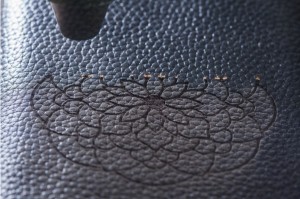While etching designs into wood or metal is an ancient art, the modern use of lasers has opened up countless new possibilities. Here at Able Engraving, we use the very latest technology to produce highly detailed results on a range of materials.
 As with any new technology, it is only natural that people have questions about how engraving works so if you are curious to learn more check out our list of frequently asked questions and answers from Able Engraving
As with any new technology, it is only natural that people have questions about how engraving works so if you are curious to learn more check out our list of frequently asked questions and answers from Able Engraving
- What exactly is a laser?
- The word laser is an acronym which stands for “Light Amplification by Simulated Emission of Radiation”. A laser emits a narrow and powerful beam of single coloured light which can generate heat energy, making it suitable for use in many circumstances in modern manufacturing and technology.
- How does a laser engrave on a surface?
- The laser beam strongly heats the surface and, as the material that is being engraved evaporates or burns, the colour changes.
- What sorts of material can be engraved on by laser?
- A laser to be used to engrave upon almost any surface including wood, plastic, tile, stone, a variety of metals and glass.
- Are laser cutting and laser engraving machines the same?
- The main difference between the two is the focal length of the laser used. To engrave, a short focal length laser is used which produces a very fine spot size, allowing highly detailed images to be produced. A laser cutter utilises a laser with a longer focal length, enabling it to cut through thicker materials.
- What are the benefits of laser engraving?
- One of the main benefits of using a laser is the fact that it can produce highly detailed images. The entire process is also contactless, meaning that the material being engraved upon will not suffer damage as a result of pressure being applied, no chips are produced during the process, and less dust is also created.
- What sort of products are commonly engraved on by laser?
- Because a laser can engrave virtually any design onto a vast array of materials the possibilities are endless! Some examples include names being engraved onto sports trophies, company logos on pens and serial numbers on mechanical components. A laser is capable of producing such detailed results that it can even reproduce photographs onto wood or jewellery or a 3D image into a block of crystal or acrylic.
